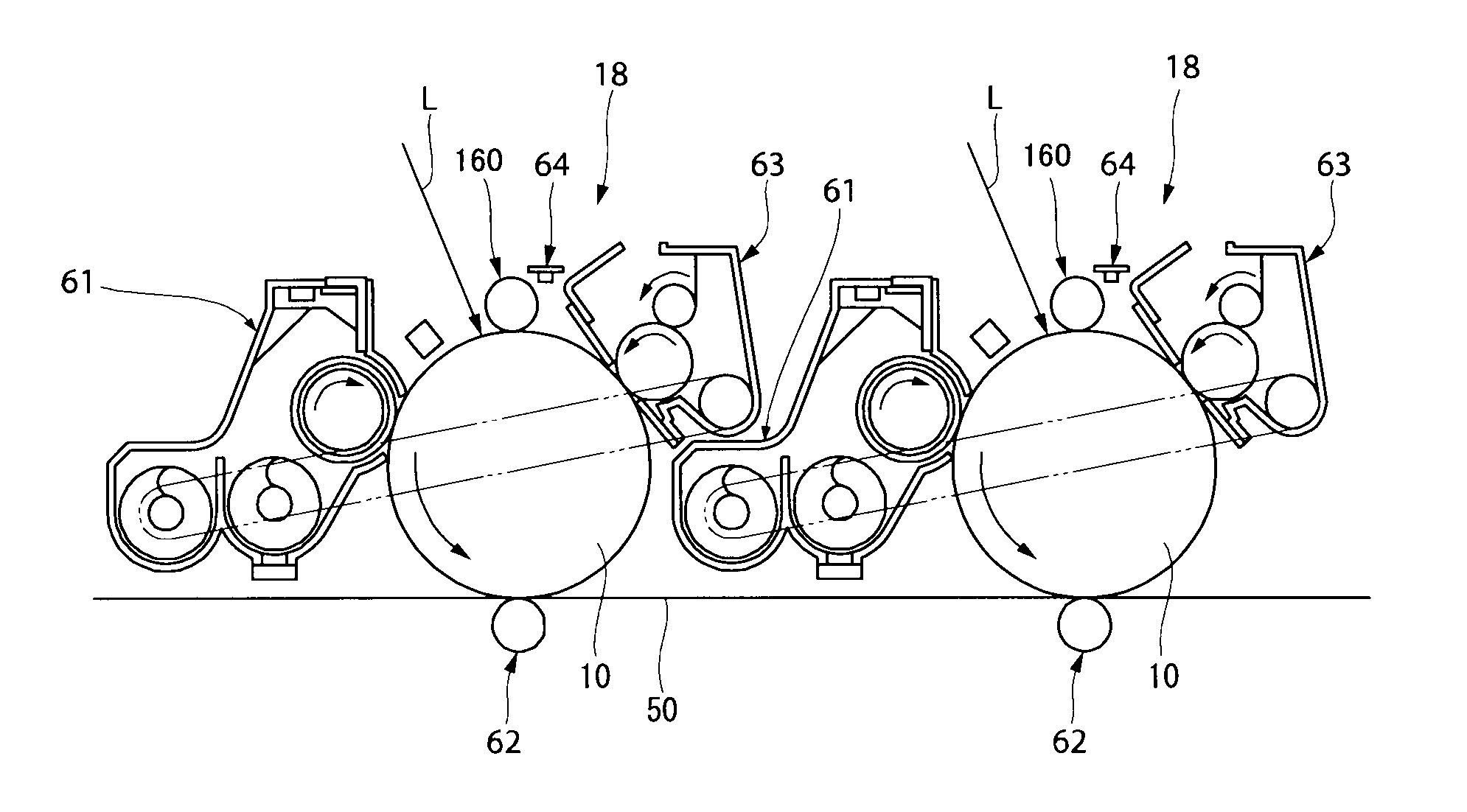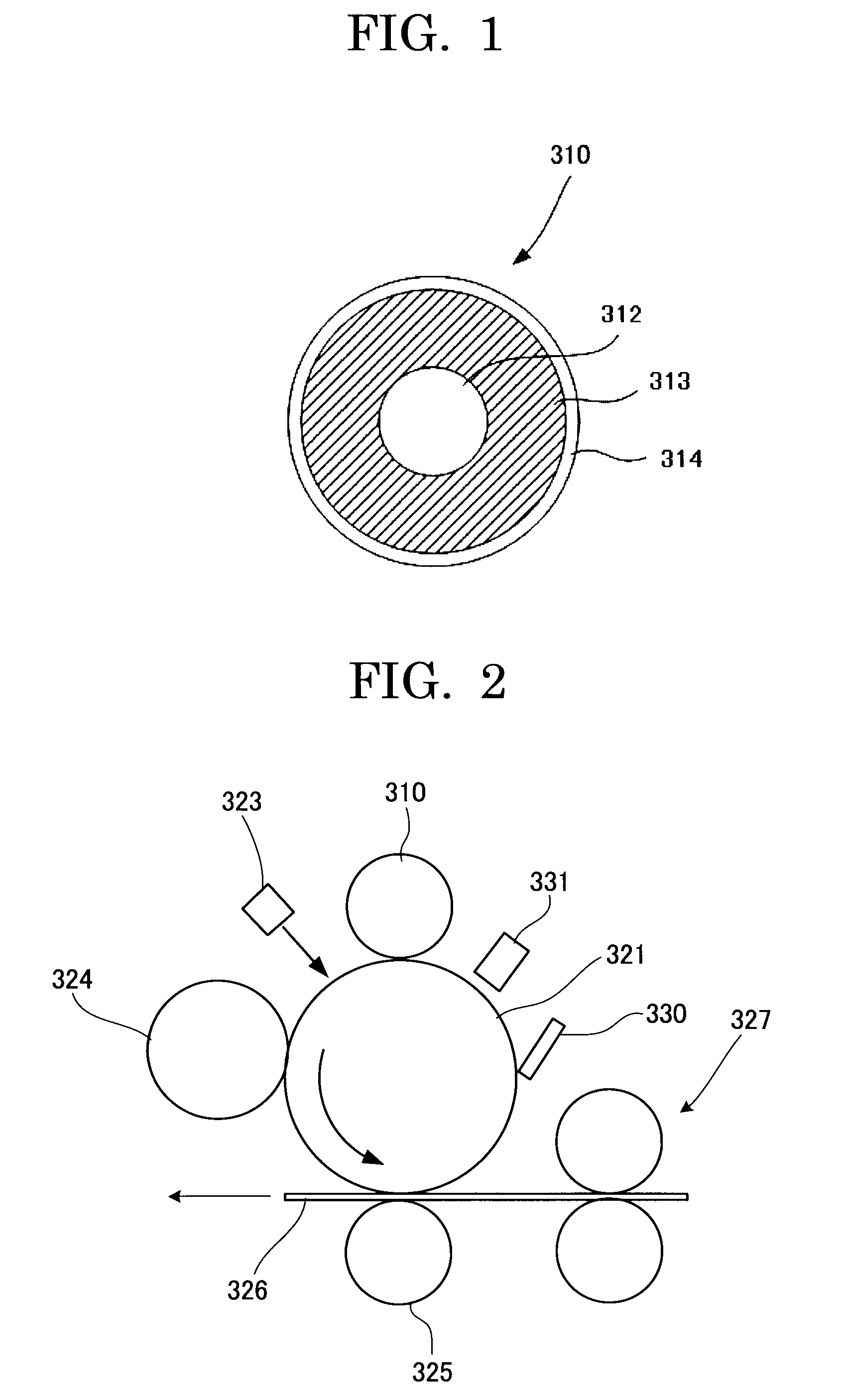Toner, image forming apparatus, image forming method, and process cartridge using the toner
a technology of image forming apparatus and process cartridge, which is applied in the direction of electrographic process, electrographic process using charge pattern, instruments, etc., can solve the problems of poor pulverization ability in the production process, degraded storage stability of toner, and difficulty in satisfying low-temperature fixing, so as to achieve high-quality images over a long period of time and reduce image density
- Summary
- Abstract
- Description
- Claims
- Application Information
AI Technical Summary
Benefits of technology
Problems solved by technology
Method used
Image
Examples
synthesis example 1
—Purification of Rosin—
[0427]In a 2,000 mL of distillation flask equipped with a fractionation column, a reflux condenser and a receiver, 1,000 g of tall rosin was added and distilled under a reduced pressure of 1 kPa to extract distilled parts obtained at the temperature range of 195° C. to 250° C. as main distilled parts. Hereinafter, the tall rosin used in the purification was referred to as “unpurified rosin”, and the extracted rosin as main distilled parts was referred to as “purified rosin”.
[0428]In a coffee mill (NATIONAL MK-61M, manufactured by Matsushita Electric Industrial Co., Ltd.), 20 g of each rosin was crushed for 5 seconds, filtered through a screen with opening diameter of 1 mm, and 0.5 g of the filtered rosin was weighed and put in a head space vial (20 mL). The head space gas was sampled, and impurities in the purified rosin were analyzed by the head space GC-MS method as follows. Table 1 shows the results.
A. Head space sampler (HP7694, supplied from Agilent Inc.)...
synthesis example 2
Synthesis 1 of Polyester Resin
[0451]An alcohol component, terephthalic acid and an esterified catalyst used for Resins H1 to H3, H5 and H8 shown in Tables 2 and 3 were poured into a 5 L four-necked flask equipped with a nitrogen inlet tube, a dewatering tube, a rectifying column, a stirrer, and a thermocouple, and the components were subjected to a condensation polymerization reaction under a nitrogen atmosphere at 230° C. for 15 hours and then further reacted at 230° C. under a pressure of 8.0 kPa for 1 hour. After the reactant was cooled to 180° C., trimellitic anhydride was added thereto, and the temperature of the reaction mixture was increased to 210° C. in 3 hours. The reaction mixture was reacted under normal pressure (101.3 kPa) for 10 hours and then further reacted at 210° C. under a pressure of 20 kPa until the desired softening point was reached, thereby synthesizing each polyester resin (Resins H1 to H3, H5, and H8).
synthesis example 3
Synthesis 2 of Polyester Resin
[0452]An alcohol component, terephthalic acid and an esterified catalyst used for Resins H4, H6, H7 and L4 shown in Tables 2, 3 and 4 were poured into a 5 L four-necked flask equipped with a nitrogen inlet tube, a dewatering tube, a stirrer, and a thermocouple, and the components were subjected to a condensation polymerization reaction under a nitrogen atmosphere at 230° C. for 15 hours and then further reacted at 230° C. under a pressure of 8.0 kPa for 1 hour. After the reactant was cooled to 180° C., the purified rosin was added thereto, and the reaction mixture was reacted at 200° C. for 15 hours. After the reactant was cooled to 180° C., itaconic anhydride was added thereto, and the reaction mixture was reacted at 200° C. for 8 hours. The reactant was cooled to 180° C., and then trimellitic anhydride was added thereto, and the temperature of the reaction mixture was increased to 210° C. in 2 hours. Subsequently, the reaction mixture was further reac...
PUM
| Property | Measurement | Unit |
|---|---|---|
| softening point Tm | aaaaa | aaaaa |
| softening point Tm | aaaaa | aaaaa |
| softening point Tm | aaaaa | aaaaa |
Abstract
Description
Claims
Application Information
 Login to View More
Login to View More - R&D
- Intellectual Property
- Life Sciences
- Materials
- Tech Scout
- Unparalleled Data Quality
- Higher Quality Content
- 60% Fewer Hallucinations
Browse by: Latest US Patents, China's latest patents, Technical Efficacy Thesaurus, Application Domain, Technology Topic, Popular Technical Reports.
© 2025 PatSnap. All rights reserved.Legal|Privacy policy|Modern Slavery Act Transparency Statement|Sitemap|About US| Contact US: help@patsnap.com



